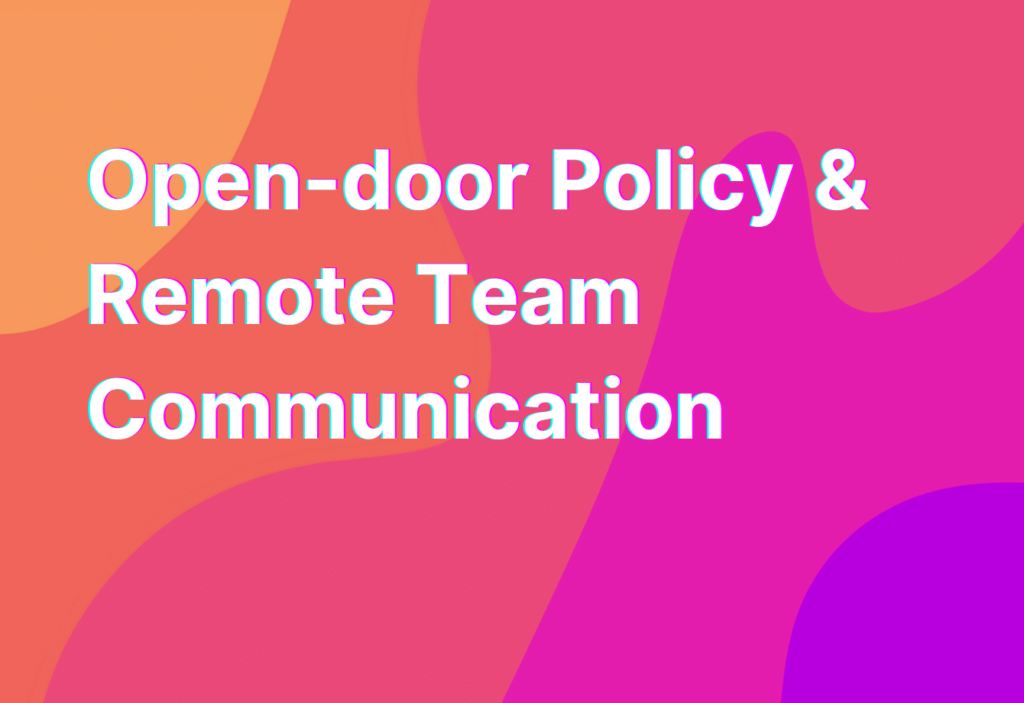Open-door Policy & Remote Team Communication
Hey there, remote work enthusiasts! Today, we’re diving into the topic of open-door policies and how they can be applied to remote team communication. As someone who has been working remotely for over 10 years, I can tell you that effective communication is the key to success in a remote team. So, let’s explore how an open-door policy can foster better communication and collaboration among remote team members.
What is an Open-door Policy?
Before we delve into the specifics of applying an open-door policy to remote teams, let’s first understand what an open-door policy actually means. Traditionally, an open-door policy refers to a management approach where leaders keep their office doors open, encouraging employees to approach them with any concerns, questions, or ideas. This creates a culture of transparency, trust, and open communication within the organization.
Now, you might be wondering how this concept translates to remote teams where physical office doors don’t exist. Well, fear not! The principles of an open-door policy can still be applied effectively in a remote work environment.
The Benefits of an Open-door Policy in Remote Teams
Implementing an open-door policy in your remote team can bring about a myriad of benefits. Let’s take a look at some of them:
- Improved Communication: An open-door policy encourages team members to freely communicate their thoughts, concerns, and ideas. This leads to better collaboration and problem-solving within the team.
- Increased Trust: When team members feel comfortable approaching their colleagues or managers with any issues, it fosters a sense of trust and psychological safety within the team.
- Enhanced Engagement: By providing an open and inclusive environment, an open-door policy can boost employee engagement and satisfaction, leading to higher productivity levels.
- Opportunity for Growth: When team members have easy access to their leaders, they can seek guidance, feedback, and mentorship, which can contribute to their personal and professional growth.
- Stronger Team Dynamics: An open-door policy promotes open communication channels, which can strengthen relationships and create a sense of camaraderie among remote team members.
Now that we’ve explored the benefits, let’s dive into some practical tips on how to implement an open-door policy in your remote team.
Tips for Implementing an Open-door Policy in Remote Teams
1. Set Clear Expectations: Clearly communicate to your team members what the open-door policy entails and how it can benefit them. Encourage them to reach out whenever they have questions, concerns, or ideas.
2. Provide Multiple Communication Channels: Offer various communication channels, such as email, instant messaging, video conferencing, and project management tools, to ensure that team members can easily connect with each other.
3. Be Responsive: As a leader, make it a priority to respond promptly to messages and requests from your team members. This shows that you value their input and are actively engaged in the communication process.
4. Encourage Regular Check-ins: Schedule regular one-on-one meetings or team meetings to provide a dedicated space for open communication. This allows team members to discuss any challenges, share progress updates, and seek guidance.
5. Lead by Example: As a leader, be approachable and open to feedback. Encourage your team members to share their thoughts and ideas, and actively listen to their input. This sets the tone for open communication within the team.
By implementing these tips, you can create a culture of open communication and collaboration within your remote team. Remember, effective communication is the backbone of remote work success!
Wrapping Up
As we wrap up our discussion on open-door policies and remote team communication, it’s important to remember that fostering open communication channels is crucial for remote teams to thrive. By implementing an open-door policy, you can create an environment where team members feel comfortable sharing their thoughts, concerns, and ideas, ultimately leading to better collaboration and productivity.
If you’re interested in learning more about remote team productivity hacks and communication strategies, be sure to check out our Productivity hacks page. It’s filled with valuable insights and tips to help you and your remote team excel!
Until next time, happy remote working!


